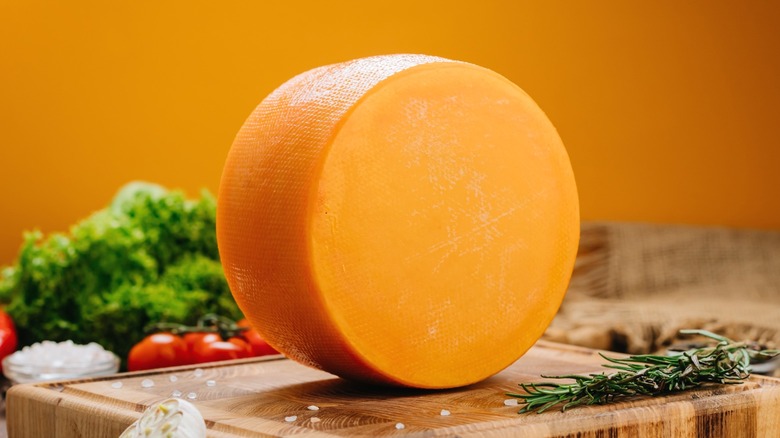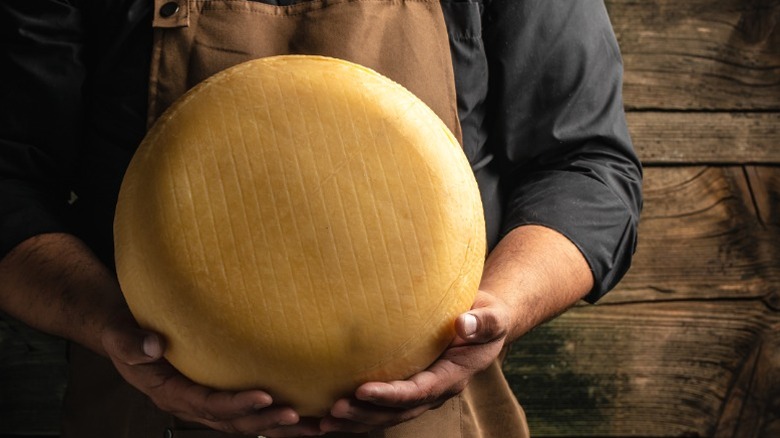Cheese Comes In Wheels For A Reason Only Science Can Explain
If you've ever seen cheese in a cartoon, it's almost invariably in a big, triangle wedge shape and about to be protruding from the midsection of whichever mouse ate it. If you see that kind of shape in real life, that means the cheese in question was cut from a wheel, or a big, round slab of cheese which is often used in bulk but rarely seen in supermarkets, with the exception of those little Babybel cheese rounds that come wrapped in red wax. So why does it come in such a shape? Part of it has to do with ease of transport, but another reason has to do with the science behind mold dispersal.
Mold is not necessarily something you'd want to find on a slice of bread, but it's vital for the aging process of cheese. Certain beneficial kinds of bacteria spread across the surface of the cheese, breaking it down and releasing different flavors from the proteins. Generally speaking, the most efficient way to get that bacteria to spread evenly is if the cheese is round. If the cheese were in a square shape, the bacteria would mostly stick to the edges, resulting in a cheese that's overripe in some places and underripe in others. It also makes it easier for a rind to form around the edge of the cheese, which is useful not only for protection but occasionally for flavor, as well. (Yes, you can eat certain kinds of rinds.)
A long history of wheel-shaped cheeses
Well, we said that "only science can explain" why cheese comes in wheels, but there are some practical aspects to it, too — and it was likely these practical aspects that made the wheel so attractive to the earliest cheesemakers in history. When cheese was made in wheels, it could be stored, often in big clay pots, which could be transported over long distances. Not only that, but it also made it easier to cut off chunks as needed. This portability carried over from the Bronze Age to medieval times, where cheese wheels were sometimes used as currency. Now, not only could they be carried in pots, but they could even be rolled from one location to another. (This is partly how the world wound up with the surprisingly brutal sport of cheese rolling.)
While we've talked about the usefulness of the cheese wheel from both scientific and practical perspectives, it's not the only shape cheese can take. There are, indeed, many kinds of cheese that come in blocks, from cheddar to Havarti to gouda. While it's not necessarily ideal for cheesemaking purposes, it's terrifically useful for storage. (There's a reason why shipping containers are usually rectangular rather than circular, after all.) Still, if you've ever wondered why you see cheese come in wheels, now you know.

